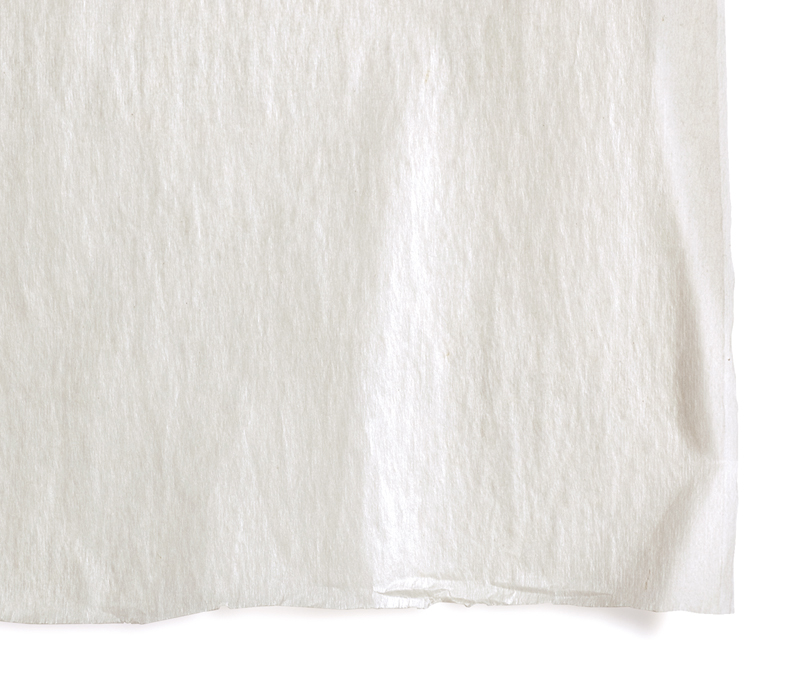Ganpishi
雁皮紙
Ganpishi
CATEGORIES
Ganpishi is a thin, semi-transparent Japanese paper often used in wood engraving and copper plate printing.
It is mainly made of bast fibers from a ganpi tree (Diplomorpha sikokiana), a plant of the Thymelaeaceae family. Ganpishi paper has a smooth, glossy surface, and is very strong even when wet despite its thinness. Another characteristic of this paper is that it does not suffer greatly from insect damage or discoloration even when stored for a long time. The most common color is natural cream but it is also sold dyed in a variety of colors such as red, brown, light blue and orange. Some of the famous production centers for this paper include Tosa, Mino, Najio, and Gokayama.
Ganpi trees are difficult to grow, so ganpishi paper makers have to rely on trees growing in the wild. Removing dirt from the nodular fibers takes a lot of time and because the fibers are thin, it is difficult to make a thick piece of paper and only a small amount can be produced at a time. There are handmade and machine-made (roll) types but they are both quite expensive.
When used for copper plate printing, the ganpishi paper is cut to the same size as the plate, placed over the plate loaded with ink, coated with a thin layer of glue, covered with printmaking paper and then passed through the press. This way, the image is printed on the ganpishi and the ganpishi is mounted on the printmaking paper at the same time. This is very effective because only the image section will be set in the beautiful colors and textures of ganpishi. In Japanese, this technique is called ganpizuri. Compared to printing on printmaking paper alone, this method produces clearer prints and is thus used frequently for aquatint and mezzotint prints, etc. which have delicate tones. With wood engraving, the image is printed on the ganpishi using a baren or a spoon, and then the ganpishi is mounted on thicker paper. Ganpishi can also be used for lithography, woodcuts and screen printing.
In all cases, the ink should be printed on the smoother side.
Ganpishi can be purchased at washi shops. Some art supply stores may also sell a limited selection of ganpishi.
* The example (photo) is of a test sample to demonstrate the properties of the paper and the possible expressions. It is not a recommendation of any particularly type of material. (Materials that are not generally suitable are also used to demonstrate.)

 Ganpishi (close-up)
Ganpishi (close-up)- Examples of strokes on Ganpishi

